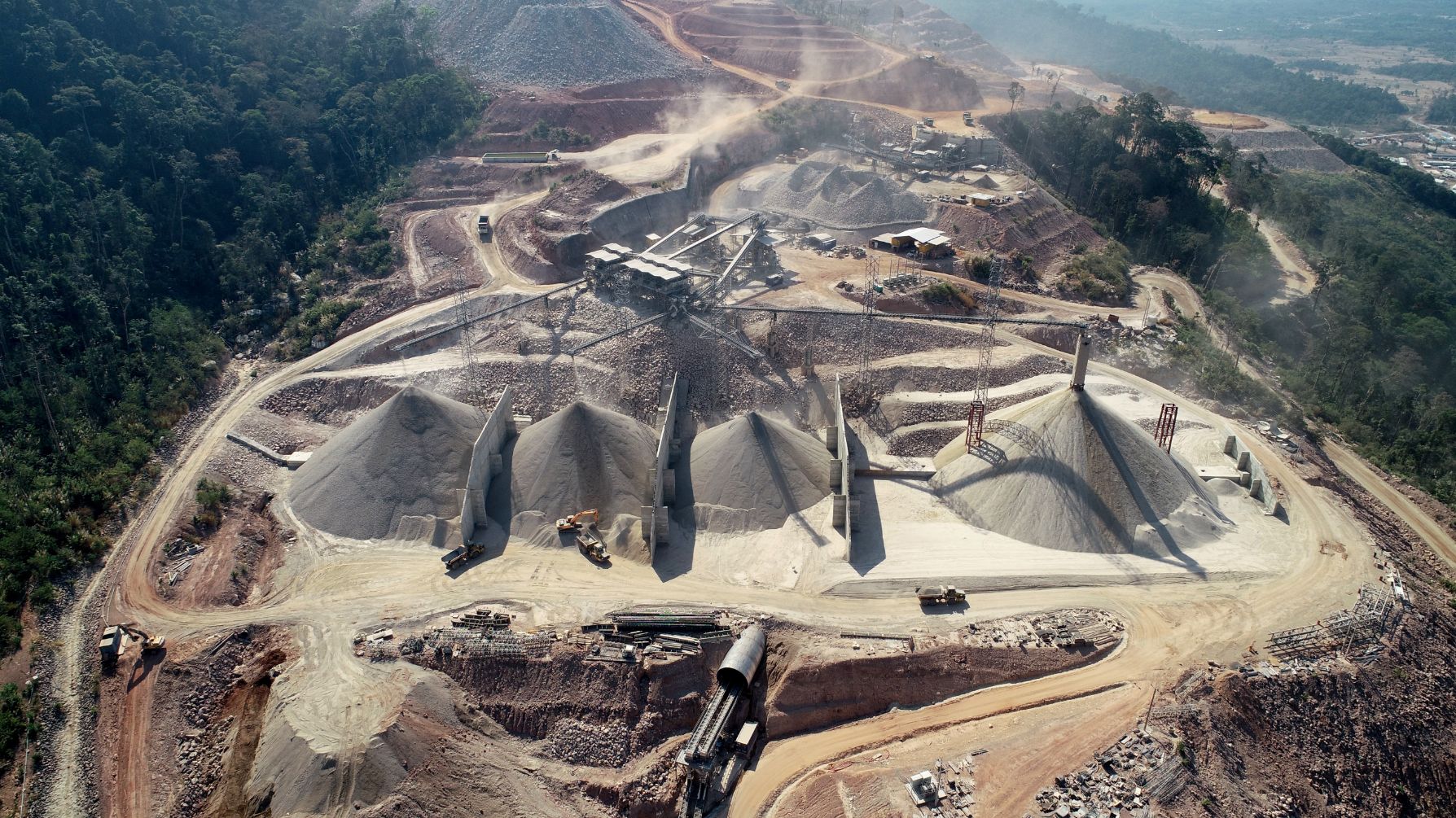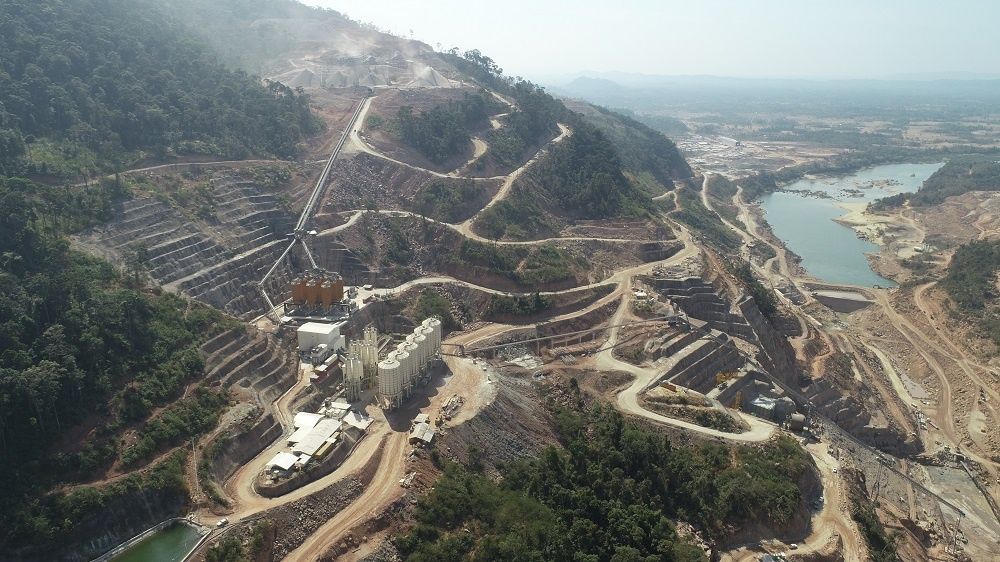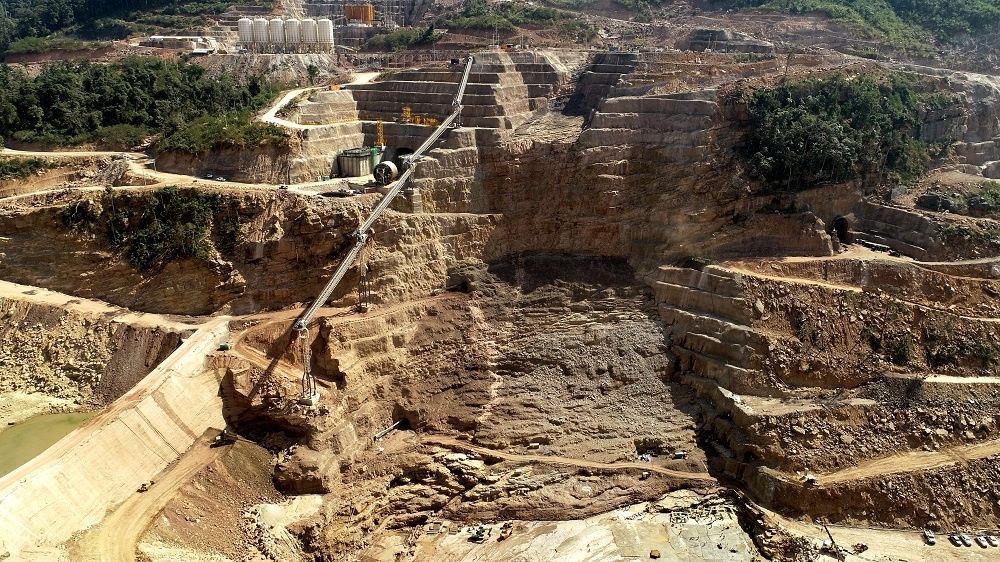Terex MPS Plant Produces Aggregates in Laos
BY Terex MPS

A joint venture of Italy’s Cooperativa Muratori e Cementisti (CMC) di Ravenna, Thai company Ital Thai, and Vietnam’s Song Da Corporation is using a 1,500-mtph ICM—Terex MPS plant to produce aggregates in Bolikhamsay Province, Laos. The plant is now being operated by Sinohydro, with works expected to be completed in 2023. While the current use is to produce 1,500 mtph of concrete aggregates, the setup includes jaw crushers and vertical shaft impactors (VSIs) that can produce the flat and elongated particles necessary for asphalt mix design.
The plant is made up of two Simplicity 5220 vibrating grizzly feeders, two Cedarapids JS4552 jaw crushers, four cone crushers (two Cedarapids MVP550X and two Cedarapids MVP450X), three VSIs, two Cedarapids TSV6202 horizontal screens, and six Cedarapids TSV8203 horizontal screens. Additionally, the setup includes 45 conveyors with a total length of 1,400 meters, and the installation of 5,000 kW of power.
The plant is being fed blasted sandstone rock with a high abrasion index. Due to the abrasiveness of the sandstone, distributor ICM srl, Italy, designed the plant to use jaw crushers and cone crushers in the first instance to get the rock to the required size without worrying about the shape of the aggregate yet. Once sized, the shape is improved using the VSIs.
Icilio Guicciardi of ICM explained, “This is a philosophy that always gives good results in terms of the quality of the aggregates and the reduction of wear costs. Having a solution that satisfies our customer’s strict requirements was of utmost importance to us and we knew that this plant setup would produce the output required.”

ICM recommends processing with a vertical shaft impactor to achieve the 5% flakiness index required of asphalt aggregates. Photo courtesy of Terex
Guicciardi shared that selecting between concrete and asphalt aggregates is based, first and foremost, on the physical property of the rock. “The asphalt rock must have a low Los Angeles index, and crushing has a low influence on that. Then round aggregate is accepted by concrete, but not by asphalt. For asphalt at least two faces of the aggregate must be crushed.”
The next factor to consider is the flakiness index, and Guicciardi spoke to that as well. He shared while a 30% flakiness index value is acceptable for concrete, the specification for asphalt aggregates is typically only 5%. “While with a cone crusher of top quality (i.e. Terex Cedarapids MVP) you can achieve a 30% flakiness index, to achieve the 5%, the aggregate must be processed by a vertical shaft impactor. Because of that, we recommend to use a jaw crusher and a cone crusher as primary and secondary station.” This allows the producer spend as little time and energy as possible to reduce the aggregate to the required size, then pass the aggregate through a VSI to achieve the needed shape and flakiness index. “We have many references of plants following this philosophy and satisfying these specifications.”

The setup includes 45 conveyors with a total length of 1,400 meters. Photo courtesy of ICM
Paul Lilley, sales director, Terex MPS for the ERA said, “The plant installation at Laos Dam demonstrates how our equipment can be seamlessly combined to provide a tailored solution that consistently delivers aggregates that meet customer requirements—even in complex, extensive projects such as this. We have no doubt this plant designed by ICM will continue achieving ultimate efficiency and production output through to project completion.”
